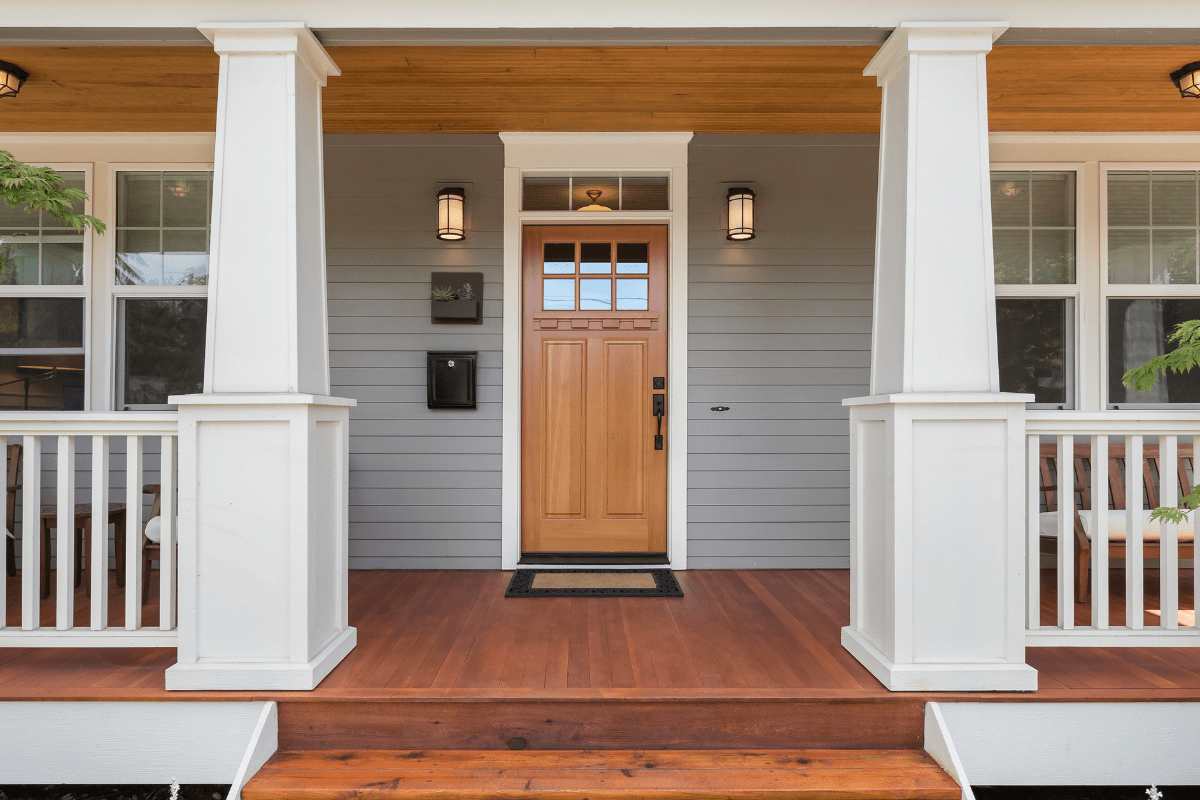Living in Nevada means dealing with two certainties: scorching summers that could fry an egg on your driveway and water bills that make you wonder if your sprinklers are secretly filled with liquid gold. But here's the good news: Nevada homeowners can slash their housing costs by 30-50% through state programs, energy upgrades, and water conservation strategies that actually work.
Solar power: Your personal money-printing machine (that's totally legal)
Let's start with the biggest game-changer for Nevada homeowners: solar panels. I know what you're thinking – "Great, another person trying to sell me solar panels." But hear me out, because the numbers are genuinely shocking.
The average Nevada homeowner can save $79,644 over 25 years with a typical 5kW solar system. That's not a typo. We're talking about enough money to buy a really nice car, send a kid to college, or take approximately 159 trips to Vegas buffets (inflation adjusted, of course).
Here's the kicker: the federal tax credit covers 30% of installation costs, but it expires December 31, 2025. After that, it drops to 26%, then keeps declining. So if you've been sitting on the fence about solar, you might want to hop off before Uncle Sam takes back some of his generosity.
The math works out beautifully for Nevada homeowners. A typical system costs $11,088 before incentives, but after the federal credit, you're looking at $7,762. With an average payback period of just 6.38 years, you'll be generating free electricity for nearly two decades after that.
Making solar work even harder for you
Nevada's net metering policy is like having a really understanding roommate who actually pays their share of the utilities. When your panels produce excess energy, NV Energy credits you at 75% of the retail rate with a 20-year guarantee. It's not perfect, but it's way better than letting that extra sunshine go to waste.
The smart money is now including battery storage. According to major installers like Solar Optimum and Sol-Up, 90% of new installations include batteries. This isn't just about surviving power outages (though that's nice when your neighbors are sweating in the dark). It's about using your own power during expensive peak hours instead of buying it back from the grid.
Turn your grass into cash (literally)
If solar is the heavyweight champion of Nevada savings, then water rebates are the scrappy underdog that surprises everyone. The Southern Nevada Water Authority will pay you $3-5 per square foot to rip out your grass and replace it with desert landscaping.
Las Vegas sweetens the deal even more, offering a total of $5 per square foot. Let me put this in perspective: if you have 5,000 square feet of grass (about average for older Nevada homes), you could receive $25,000 in rebates. That's right – they'll basically pay for your entire landscape renovation and possibly throw in a nice vacation.
The program has been wildly successful, converting 241 million square feet of turf since 1999 and saving 203 billion gallons of water. That's enough water to fill about 308,000 Olympic swimming pools, or one really, really big pool that would violate several zoning laws.
Why your water bill looks like a phone number
Nevada's tiered water rate structure is designed to make water wasters cry into their overwatered lawns. Here's how it breaks down:
- Tier 1: $1.56 per 1,000 gallons
- Tier 2: $2.71 per 1,000 gallons
- Tier 3: $4.18 per 1,000 gallons
- Tier 4: $6.14 per 1,000 gallons
- Excessive use charge: $9 per 1,000 gallons
That excessive use charge applies to the top 10% of water users during peak season. If you're in that category, the water district basically considers you their favorite customer in the worst possible way.
Smart irrigation controllers can reduce outdoor water use by 30-50%, and SNWA offers rebates for qualifying models. These devices adjust watering based on weather conditions, so you're not accidentally watering your desert landscaping during a rainstorm like some kind of confused homeowner.
Taming the electricity beast
Nevada electricity bills hit different when it's 115°F outside and your AC is working harder than a casino dealer on New Year's Eve. The average Las Vegas household pays $179 monthly or $2,148 annually for electricity.
But wait, it gets worse! NV Energy customers in Southern Nevada have seen rates increase 54.2% from 2021 to 2025. That's an extra $844 per year just to keep your house from becoming an oven. Northern Nevada didn't escape either, with a 50.2% increase over the same period.
Beat the heat without breaking the bank
Local HVAC experts have cracked the code on desert cooling efficiency. Setting your thermostat to 77-80°F during the day and 76°F at night can reduce cooling costs by 10-15%. I know that sounds warm, but your body adjusts, and your wallet will thank you.
Time-of-Use rates make timing crucial. Peak hours from 1-7 PM can see rates exceeding 18¢ per kWh, compared to off-peak rates that are significantly lower. A smart thermostat can automatically adjust to these rate changes, pre-cooling your home before peak hours like some kind of temperature-manipulating wizard.
Nevada Clean Energy Fund CEO Kirsten Stasio puts it bluntly: energy efficiency has the "potential to cut utility" bills by more than half. That's not just switching to LED bulbs (though you should do that too). We're talking serious upgrades like:
- High-performance blown-in insulation
- ENERGY STAR windows designed for hot climates
- Variable-speed pool pumps
- Smart power strips that eliminate phantom loads
Property taxes: Nevada's hidden advantage
While California homeowners weep into their property tax bills, Nevada maintains some of the nation's lowest rates at 0.48-0.50% effective rate versus the 0.90% national average. In Clark County, that translates to a median annual tax of just $2,856.
Even better, Nevada caps annual tax increases at 3% for primary residences. This isn't a cap on your home's assessed value – it's a cap on how much your actual tax bill can increase. So even if your home value skyrockets because Elon Musk decided to build a hyperloop in your neighborhood, your taxes won't follow suit.
Special exemptions that actually matter
Veterans get genuinely meaningful property tax breaks in Nevada:
- Basic veteran exemption: $3,540 in assessed value
- 60-79% disability: $10,000 exemption
- 80-99% disability: $15,000 exemption
- 100% disability: $20,000 exemption
These exemptions adjust annually for inflation, and they can save veterans hundreds of dollars annually. For a 100% disabled veteran in Clark County, that $20,000 exemption translates to about $656 in annual savings.
If you think your property is overassessed, you can appeal. Assessment notices arrive by December 18, and appeals are due by January 15. Successful appeals have resulted in refunds of $15,000-25,000, though results vary. The key is showing your assessed value exceeds market value through comparable sales data.
State programs most people don't know exist
Nevada runs several assistance programs that fly under the radar like a stealth bomber made of money-saving opportunities. The Home Is Possible program provides up to 4% down payment assistance as an interest-free second mortgage that's forgiven after three years.
Teachers get an even better deal through Home Is Possible for Teachers, offering $7,500 in forgivable assistance. The catch? You need to stay in the home for five years instead of three. But if you're a teacher in Nevada, you're probably used to long-term commitments that test your patience.
Income limits are surprisingly generous: $105,000 for individuals or $135,000 for multiple borrowers. That covers a lot of middle-income families who thought they were too "rich" for assistance programs.
Help for seniors and low-income homeowners
Seniors and low-income homeowners have their own set of programs:
- Nevada Energy Assistance Program: up to $3,136 annually
- USDA Section 504 grants: up to $7,500 for homeowners 62+
- Southwest Gas weatherization: free for 55+ earning under $25,000
These programs stack with other savings opportunities. So you could theoretically get solar panels, convert your landscaping, weatherize your home, AND get assistance with utility bills. It's like a savings sandwich with extra savings on top.
Insurance: The forgotten money drain
Nevada homeowners pay relatively reasonable insurance rates, averaging $1,092-1,290 annually. But location matters more than you'd think. Minden residents pay $1,367 while Winchester folks shell out $1,961. That's a $600 difference just based on your zip code.
The easiest insurance savings come from bundling. Multi-policy discounts range from 5-20%, and most people qualify. Add in discounts for security systems, smart home devices, and claims-free history, and you could slash your premium by 30% or more.
Real-world success stories that aren't made up
These strategies aren't theoretical. Carson City's municipal government saves $50,000 annually from their 500kW solar installation. UNLV saves $130,000 yearly from 1.4MW of panels across 14 buildings. If it works for them, it'll work for your house (though probably with fewer panels).
On the water conservation front, Southern Nevada has reduced per capita water use by 55% since 2002 while adding 829,000 residents. That's like adding the entire population of San Francisco while using less total water. The landscape conversion program made this possible, proving that desert landscaping doesn't mean your yard has to look like the surface of Mars.
Preparing for what's coming next
NV Energy wants to change from monthly to 15-minute net metering calculations, which could reduce solar savings for new installations. Northern Nevada's basic service charge will nearly triple from $16.50 to $45.30 monthly. These changes make current programs even more valuable.
Climate change isn't helping either. Extended cooling seasons mean your AC starts working overtime in April and doesn't clock out until November. The Colorado River's continuing decline guarantees water costs will rise, making today's conservation investments tomorrow's necessity.
But technology offers hope. Smart home systems now provide automated demand response, and battery storage adoption hits 90% of new solar installations. These aren't just fancy gadgets – they're money-saving tools that work 24/7.
Your action plan for maximum savings
Here's your priority list for slashing those housing costs:
- Apply for landscape conversion rebates immediately
- Get solar quotes before December 2025
- Install a smart thermostat this month
- Check veteran/senior exemption eligibility
- Appeal property taxes if overassessed
- Bundle insurance policies
- Apply for down payment assistance
- Upgrade to efficient pool equipment
The biggest mistake Nevada homeowners make is waiting. Every month you delay solar installation is money left on the table. Every summer with grass is thousands in rebates you're not claiming. Every peak-hour AC blast is cash evaporating faster than water in July.
Nevada offers unique challenges for homeowners, but it also provides uniquely generous solutions. By combining solar incentives, water rebates, property tax strategies, and efficiency upgrades, that 30-50% cost reduction isn't just possible – it's practically inevitable for homeowners willing to take action. Your future self (and bank account) will thank you for starting today.





